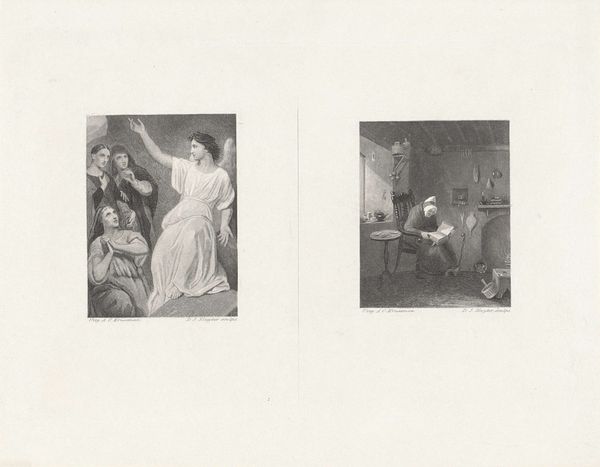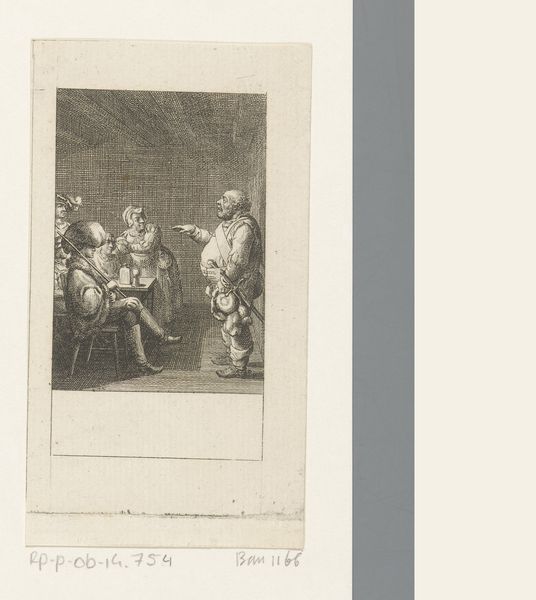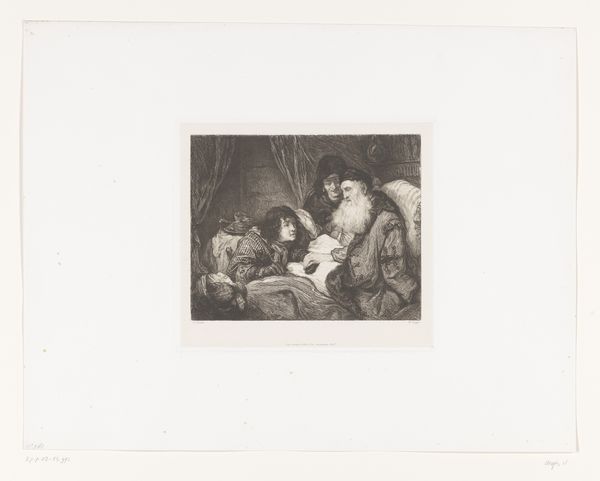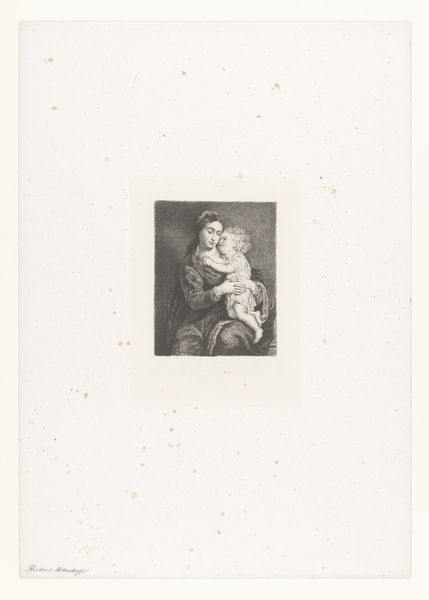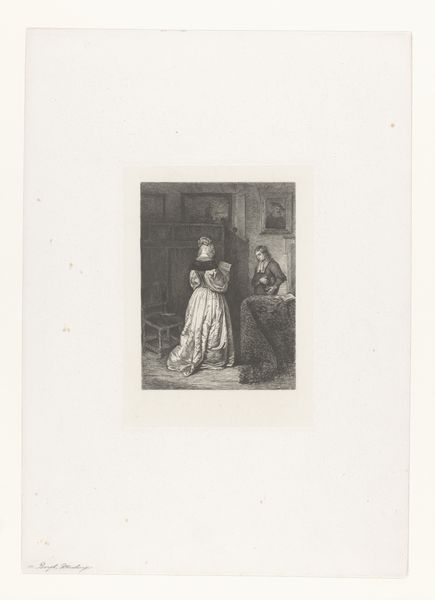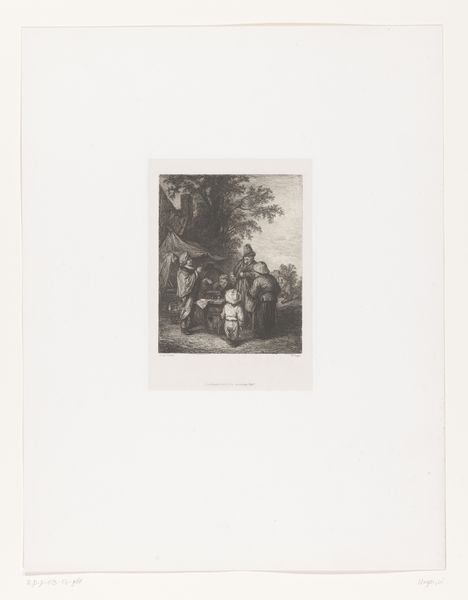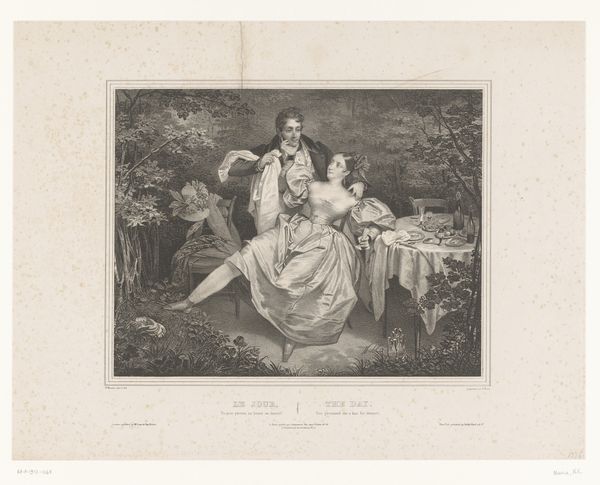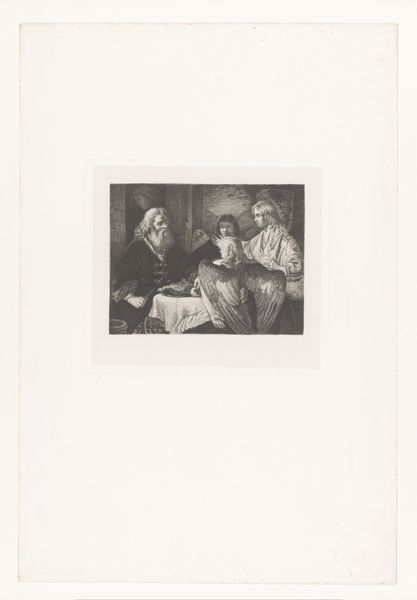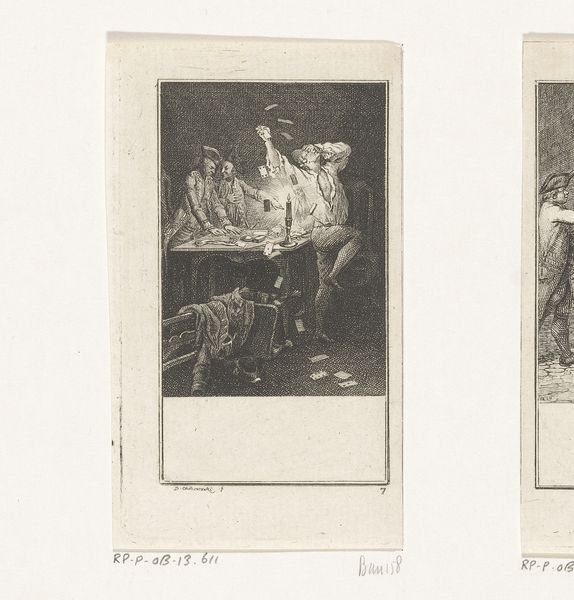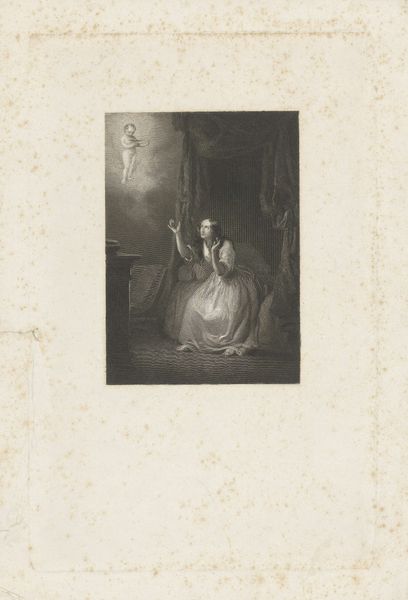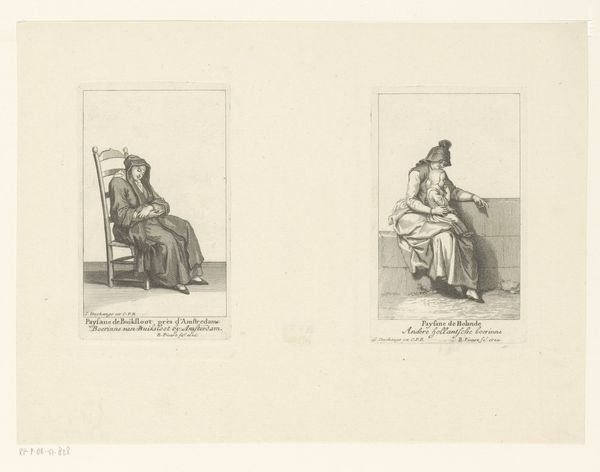
Dimensions: height 174 mm, width 250 mm
Copyright: Rijks Museum: Open Domain
Curator: We're looking at a print titled "Oude man met kind - Weldoenster der armen," dating from between 1842 and 1873, by Dirk Jurriaan Sluyter. Editor: My initial impression is of contrasting scenes – one domestic, warm even, and the other… stark, almost pleading. Curator: Yes, it's interesting how Sluyter presents two seemingly disparate narratives. The left panel portrays an intimate moment: an older man with a child. The right shows a woman surrounded by a group of people, presumably those she helps, hence, Weldoenster der armen or Benefactress of the Poor. These images evoke notions about social structures in the Romanticism movement. Editor: It’s the texture, created by the pens and printmaking processes, that really grabs me. You can almost feel the weight of the garments, the worn surfaces around the figures. These textures enhance the narratives, highlighting the different experiences represented: the comfort of home versus the hardship suggested on the right. The means of creating these different moods feel tangible. Curator: It’s hard to separate that feeling of social obligation present in the title, from the context in which Sluyter made the work. Looking at art production and its relationship to society reveals interesting social power dynamics; artistic production provided images that propagated notions of duty and assistance among upper classes in European societies. Editor: It makes me think about accessibility too. Prints made images widely available; they moved art away from elite galleries and opened new conversations. How were Sluyter’s pieces consumed? Did people consider its means for replication? Was it widely reproduced as well? Curator: Precisely. This piece makes us ask questions about our own engagements, doesn't it? Are we truly seeing, feeling, or just passing through the experience without connecting the image to how we address socioeconomic problems in our era. Editor: Absolutely, and appreciating how the material processes, the artistic production can reflect how social duties get materialized. A beautiful piece overall.
Comments
No comments
Be the first to comment and join the conversation on the ultimate creative platform.

